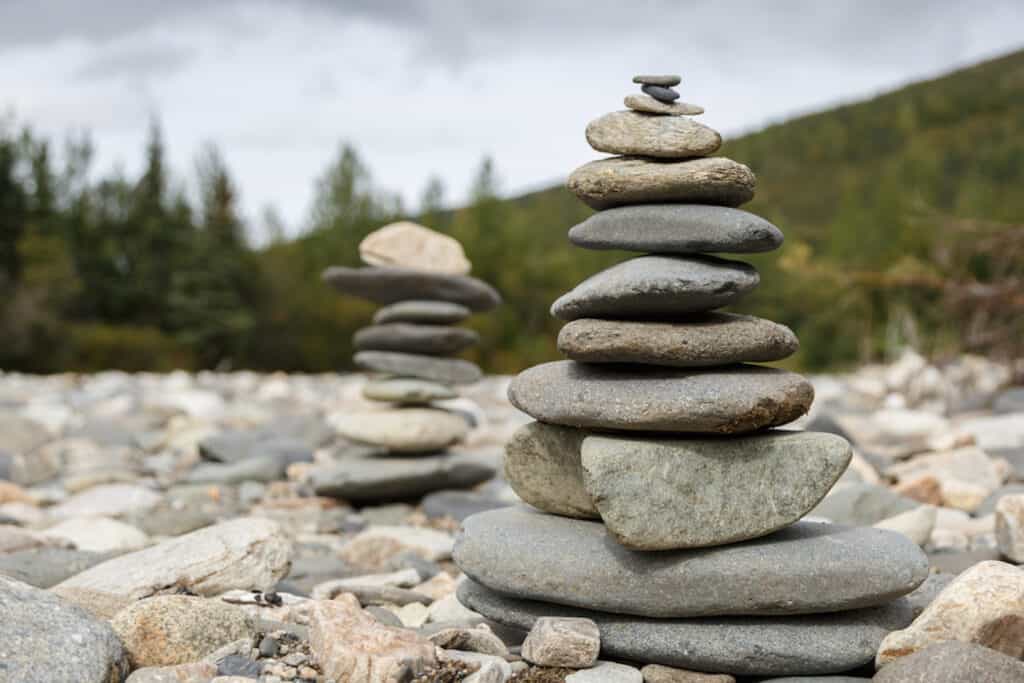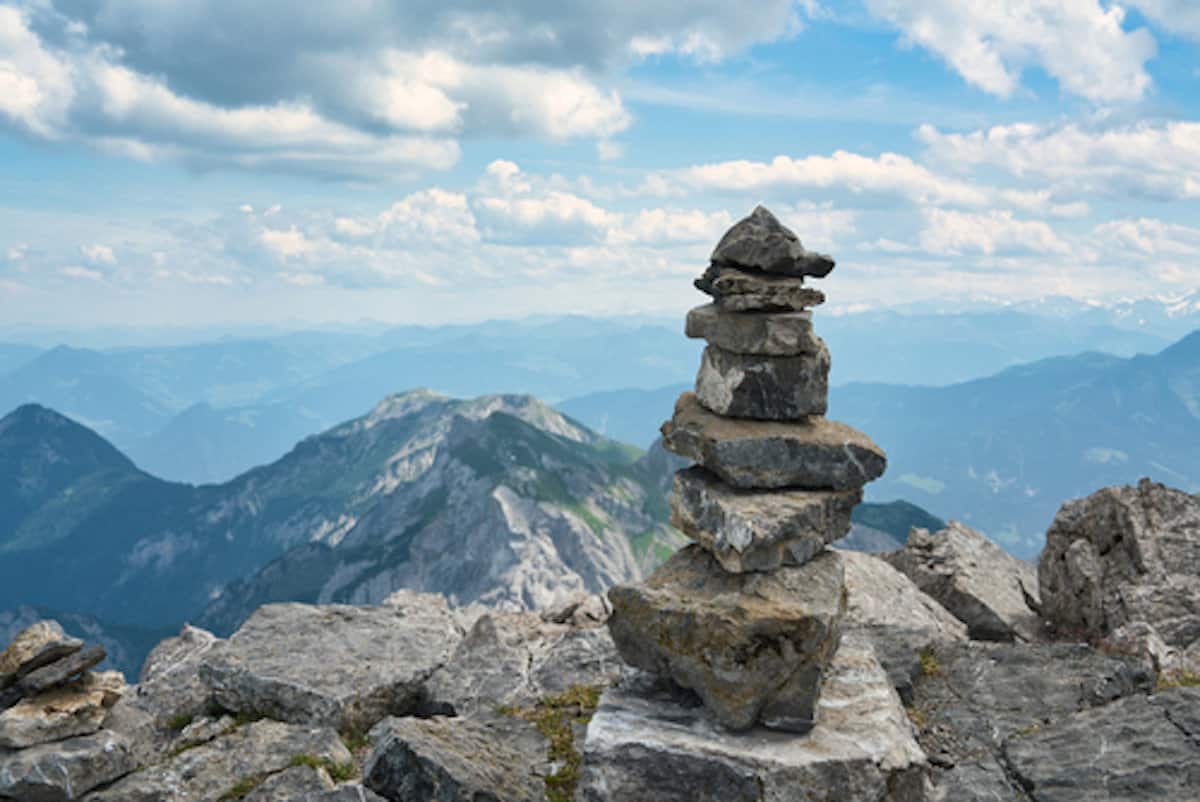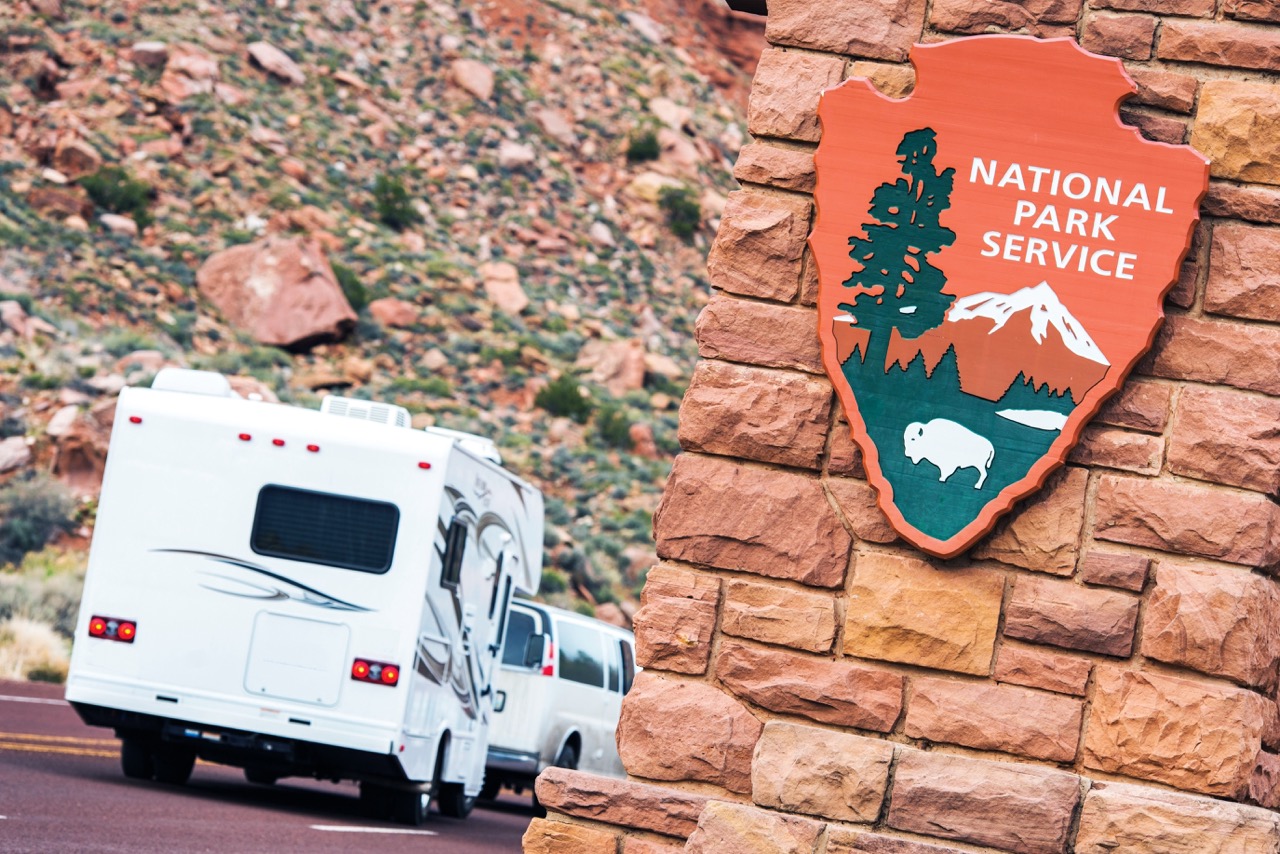
Why You Shouldn’t Stack Rocks In The National Parks
You’ve probably come across piles of rocks in a national park, you may have wondered where they came from and whether they are there for a reason. Sometimes rocks are neatly stacked one on top of another. Other times, they might be balanced end-on-end in gravity-defying and mysterious stacks. Rock stacks (sometimes called cairns) have been used for centuries as waypoints to keep people from getting lost. You may have even stacked some rocks yourself, either to help mark your way on trails.
Stacking or balancing rocks has gained a lot of popularity in the last few years. This is largely owing to social media trends. For example, our Instagram search of #stackingrocks yielded 21,000 photos of rocks stacked in every conceivable natural environment. It’s actually trendy to pile rocks on each other in nature and then post a photo or video on Instagram. If it’s trendy, it can’t be all bad, right?
National Parks actually places stacks of rocks at important waypoints along trails to help hikers navigate and keep them from getting lost. National Park Service wants you to know that you should never stack rocks in national parks. Here are three reasons you shouldn’t stack rocks in national parks.
1. Safety Issue – Hikers Could Get Lost
National parks actually place stacks of rocks at important waypoints along trails. These cairns are meant to help prevent hikers from getting lost. National Park Service wants you to know that you should never stack rocks in national parks. Here are three reasons you shouldn’t stack rocks in national parks.
No one stack rocks to put others at risk of getting lost, but that’s exactly what can happen when you stack rocks in a national park. That’s because so many hikers rely on the stacks of rocks or cairns the National Parks Service uses to mark places where the trail changes direction, and/or other significant waypoints. When hikers come across a random stack of rocks they may think it marks an important waypoint, and become disoriented or even lost.
2. You’ll Wreck Important Habitats
When you pick up a rock to stack it, you’re wrecking somebody’s home. It’s easy to disregard the often tiny creatures that shelter under rocks. However, the area beneath common-looking rocks can provide an extraordinary home for tiny insects, reptiles, amphibians, or even small rodents. Not only that but when temperatures drop, the surfaces of rocks can provide important places for reptiles to sunbathe and get warmed up. When you stack rocks on dry land, many tiny, but ecologically important creatures lose their homes.
But what about creating balanced rock sculptures around streams, rivers, and lakes? The smooth, rounded rocks in these areas seem to be favored for building little sculptures of neatly piled and balanced rocks. However, there are good reasons you shouldn’t build in water environments either. Creatures and plants that live in the water need the rocks and stones there to stay in place. In rivers and streams, rocks and stones create little eddies, and direct currents to provide safe habitats for all kinds of plants and animals. In the end, you have to ask yourself, is creating a cool balanced rock sculpture really worth wrecking some creature’s home?
3. Rock Stacks Wreck it for Everyone
People venture into the wilderness to get away from other people and to immerse themselves in nature. It’s nice to have the illusion that we’re the first ones to experience a magnificent natural area. That being said, when you leave a little pile of rocks to mark that you visited a spot in a wilderness area it wrecks that immersive experience. Everyone deserves to enjoy the best our parks have to offer. In light of that it’s just plain rude.
True story: No other hiker wants to know that you visited a gorgeous spot at the top of a mountain or a pristine location on the shores of a remote lake before they did. Stacking rocks on top of each other in a type of quasi-sculpture deprives everyone else of experiencing the same natural sanctuary that you got to experience when you arrived. That’s just inconsiderate. We all owe it to others to leave our nature the same way we found it.
Conclusion
The lands and waters that are preserved in our national parks are extra special. They are some of the most wonderful places on Earth. This is exactly why they attract millions of visitors every year from all over the planet. Now imagine if each and every visitor to Yosemite or Grand Canyon left a little cairn to tell other visitors they were there. Get the picture?
With that being said, there are a few simple things everyone can do to help preserve our natural places. Above all, just remember the tenet of “leave no trace” when you head into the trails. Whenever you do anything that disturbs the ecosystem it has an astonishing and far-reaching ripple effect.
- Never pile rocks or build your own cairns. Moving rocks disturbs fragile micro-ecosystems.
- Don’t disturb or modify existing cairns. If a park ranger put a cairn in a particular place, it’s there for an important reason. It doesn’t need to be bigger, smaller or in a different place.
Click here to find out what the National Park Service wants you to know about stacking rocks in national parks.
The post Why You Shouldn’t Stack Rocks In The National Parks appeared first on Camper Report.













